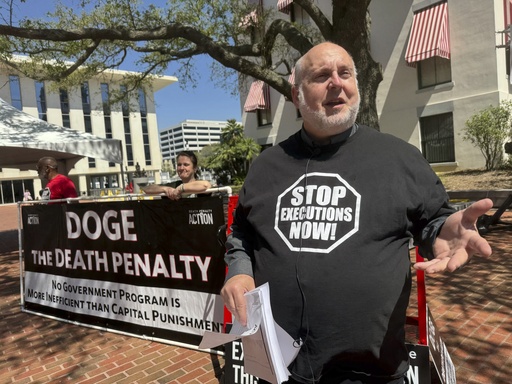In the quiet confines of a Floridian prison’s death chamber, 60-year-old Edward Zakrzewski, facing his final moments, expressed gratitude before his execution. His parting words reflected his ironic appreciation for what he termed a cold, calculated, and humane end. Zakrzewski’s death marks him as the 27th person executed in the United States this year, setting the highest execution count in a decade. Under the guidance of Republican Governor Ron DeSantis, Florida has notably spearheaded this trend, having enforced nine executions in 2025, which is more than any other state.
Governor DeSantis has now executed more people in one year than any Florida governor since capital punishment was reinstated in 1976. The series of executions this year has outpaced the entirety of last year’s, placing the U.S. on the path to surpass the 28 executions conducted in 2015. With nine additional executions already scheduled across seven states this year, the numbers seem set to increase.
Historically, after the Supreme Court’s removal of the death penalty ban in the 1970s, executions reached a zenith of 98 in 1999. However, subsequent years witnessed a gradual decline due to various factors, including legal challenges, a scarcity of lethal injection drugs, and dwindling public support for capital punishment. While many states have taken a pause or abolished the practice, recent developments show a renewed vigor for capital punishment in some Republican-led states.
John Blume from the Cornell Death Penalty Project suggests this surge in executions is less about public opinion shifts and more about individual governors’ discretion. He implies there’s an alignment with the federal stance on capital punishment, influenced by political leadership.
Governor DeSantis, addressing media queries, emphasized the severity of certain crimes justifies the death penalty, describing these as the “worst of the worst” offenses. Julie Andrew, who observed the execution of her sister’s murderer earlier this year, shared a sense of relief and closure from the process.
Despite public assumptions, the process through which governors decide on executions remains opaque and subject to criticism. Florida’s Department of Corrections notes 266 inmates currently reside on death row, with some awaiting their fate for over four decades. Governor DeSantis maintains that his actions aim to bring closure to victims’ families and ensure justice is served appropriately.
Internationally, the U.S. stands alongside countries like Iran and Saudi Arabia regarding execution numbers. China reportedly executes the most, although precise figures remain undisclosed. Within the U.S., the death penalty is often wielded as a political statement, reflecting a leader’s tough-on-crime stance, according to Robin Maher of the Death Penalty Information Center.
Florida’s execution rates under DeSantis have varied, with no executions from 2020 to 2022, followed by six in 2023. This was also the year DeSantis announced his presidential aspirations, competing against Donald Trump for the Republican ticket. Execution rates can fluctuate based on numerous factors, including legal challenges, the availability of resources, and the governor’s personal views on the matter, as explained by attorney and professor Mark Schlakman.
As each execution nears, death penalty opponents continue their vigils, calling for a shift away from capital punishment through petitions and public prayer. Suzanne Printy, of Floridians for Alternatives to the Death Penalty, persistently delivers appeals to the governor, advocating for mercy and reform. Despite the ongoing efforts, two more executions have been confirmed for later this month, yet Printy remains hopeful that change is possible.


